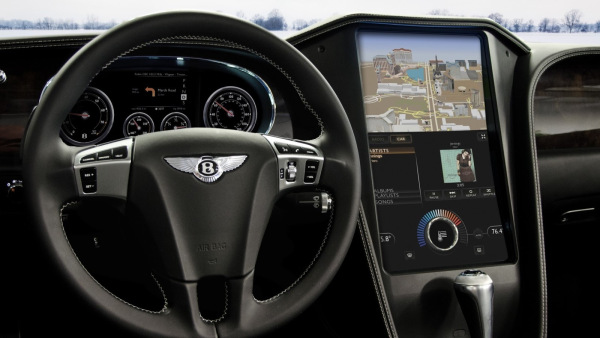One of the coolest things about my job in BlackBerry’s QNX division is getting to see all the silicon chipmakers’ roadmaps. OK, I’m a nerd. That is not a surprise to anyone, I’m sure. Still, there’s a lot of amazing innovation going on that you just haven’t heard about yet.
And you won’t hear any of it from me… sorry.
Originally posted on the QNX Auto Blog. As part of the run up to CES 2017, we are running a series of blogs to address automotive industry topics that we feel will be prominent at CES in January. Stay tuned throughout the month of December for more.
What I will tell you is that the embedded chip world – at least in the areas QNX plays – is going 64-bit. It’s pretty much already done so, actually. Intel’s architecture has been 64-bit for as long as I can remember, and ARMv8 is almost exclusively 64-bit.
It’s here. It’s real. You can buy it. Pretty much everybody has it.
Graphics is another area that is moving fast. The latest embedded graphics processing units (GPUs) are really impressive. I know of one chip that actually has two full-blown GPUs on a single die. The things I’m seeing on the bench are amazing – we’re light-years ahead of where we were only a chip generation ago.
Aligning our roadmap to these innovations is key for QNX. We need to make sure our products sing with our silicon partners’ technology. We need to make sure our customers – companies that make the infotainment systems and digital instrument clusters for the car manufacturers – can take the latest systems on a chip (SoCs) and build the things the world wants.
One of the things the world wants these days is a digital cockpit – a unified experience across multiple displays in the car’s cabin. That’s possible now, but it takes two SoCs to do it – one for the cluster and one for the infotainment system. It also takes space, power, cabling, connectors, and inter-processor communication. Hassle, and lots of it.
The obvious dream is to eliminate all this cost and complexity and just use a single SoC for both. Easy. Except digital instrument clusters and infotainment systems are different – very different.
Infotainment systems need lots of horsepower. They use lots of memory. Navigation systems alone can surpass 4 gigabytes. They also require huge state diagrams. They also need lots of eye-candy. GPU performance is key.
Complicated indeed.
Digital instrument clusters need incredibly smooth graphics performance, but are relatively simple otherwise, save for being safety-critical. Overlay that with making sure what you think you are rendering is what actually gets displayed. If the screen says P(ark) and the car is in R(everse) people get hurt or worse. Clusters are complicated too.
What do you need to make all this work? For sure you need a 64-bit safety-certified embedded OS. You need a hypervisor with the ability to share graphics across virtual machines. You need ISO 26262 certification top to bottom, as well as a way to ensure drivers see the intended output. And you need an SoC with the juice to make it all happen.
That’s a lot. No wonder people think the single-chip digital cockpit is still a dream. But maybe it’s not.
Maybe you should come see us at CES 2017 between January 5-8 in the North Hall, and see what the car cockpits of the future really look like.

